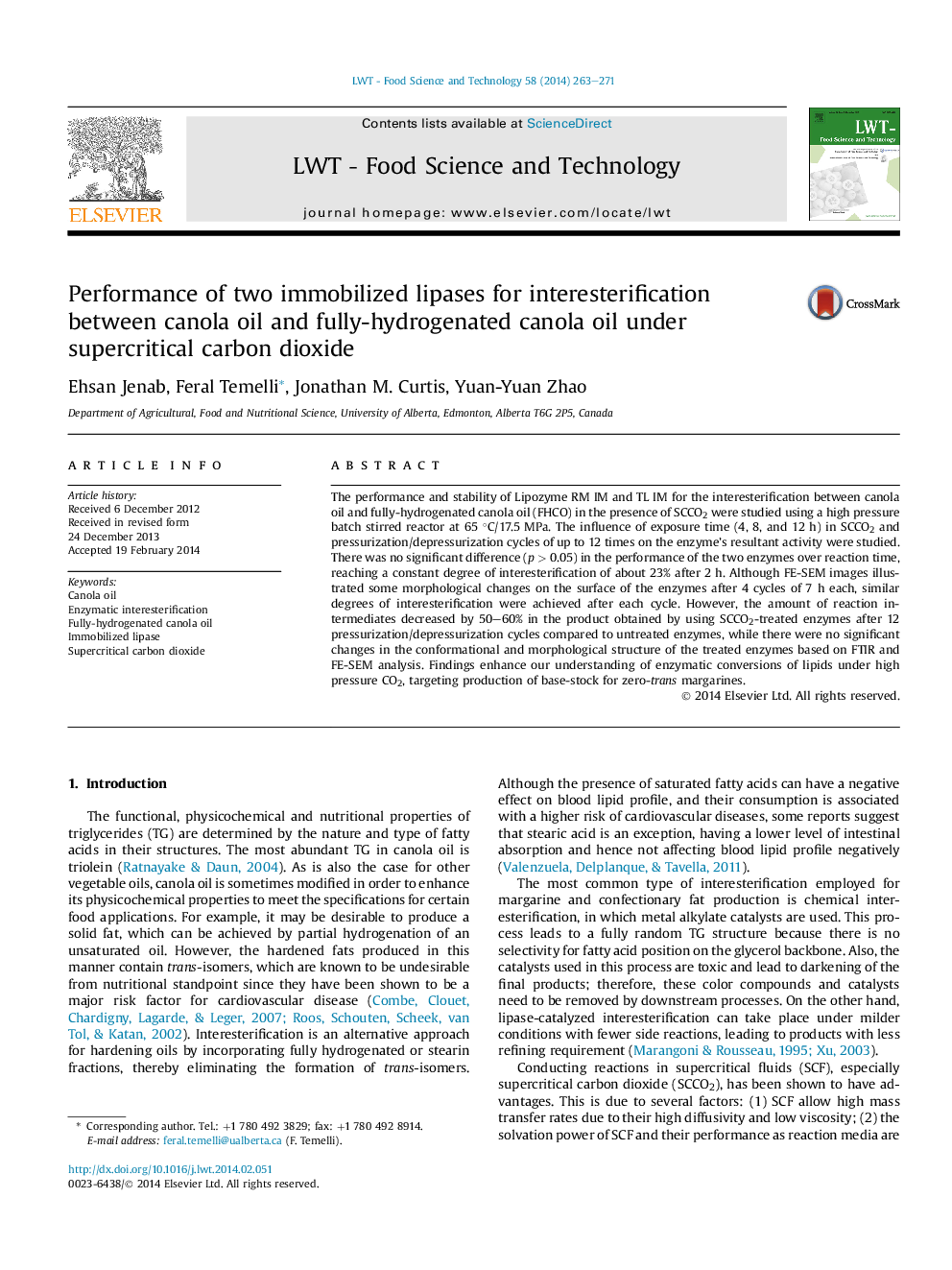| Article ID | Journal | Published Year | Pages | File Type |
|---|---|---|---|---|
| 6404113 | LWT - Food Science and Technology | 2014 | 9 Pages |
â¢Successful use of Lipozyme TL IM and RM IM for lipid interesterification in SCCO2.â¢No effect on degree of interesterification after SCCO2-treatment of immobilized enzymes.â¢No significant effect on morphology of immobilized enzymes by exposure to SCCO2.â¢Decrease of reaction intermediates when SCCO2-treated enzymes used for interesterification.â¢Acceptable reusability of enzymes for interesterification under SCCO2.
The performance and stability of Lipozyme RM IM and TL IM for the interesterification between canola oil and fully-hydrogenated canola oil (FHCO) in the presence of SCCO2 were studied using a high pressure batch stirred reactor at 65 °C/17.5 MPa. The influence of exposure time (4, 8, and 12 h) in SCCO2 and pressurization/depressurization cycles of up to 12 times on the enzyme's resultant activity were studied. There was no significant difference (p > 0.05) in the performance of the two enzymes over reaction time, reaching a constant degree of interesterification of about 23% after 2 h. Although FE-SEM images illustrated some morphological changes on the surface of the enzymes after 4 cycles of 7 h each, similar degrees of interesterification were achieved after each cycle. However, the amount of reaction intermediates decreased by 50-60% in the product obtained by using SCCO2-treated enzymes after 12 pressurization/depressurization cycles compared to untreated enzymes, while there were no significant changes in the conformational and morphological structure of the treated enzymes based on FTIR and FE-SEM analysis. Findings enhance our understanding of enzymatic conversions of lipids under high pressure CO2, targeting production of base-stock for zero-trans margarines.
